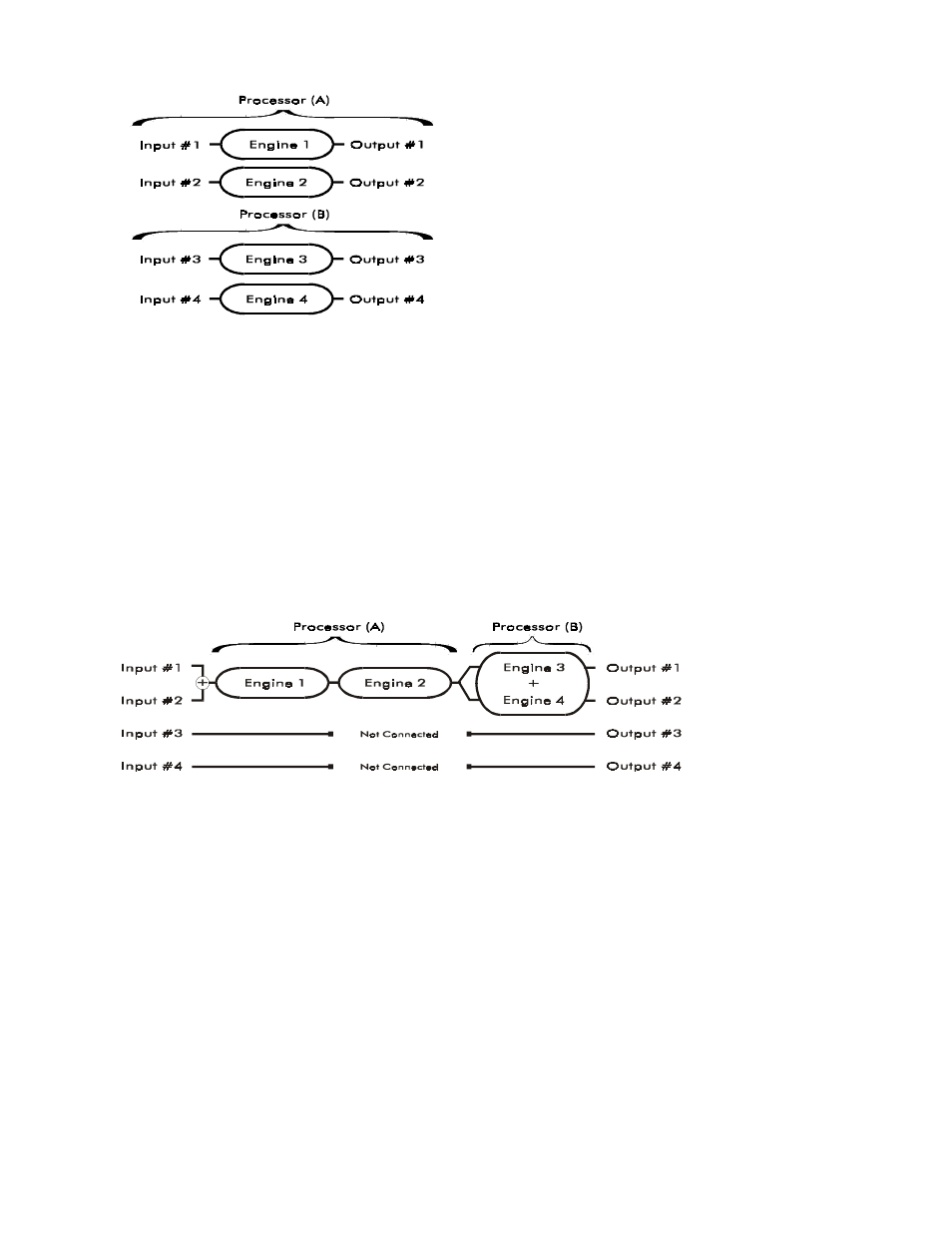ART Pro Audio DMV-Pro - Dual True-Stereo Effects Processor User Manual
Page 31

- 27 -
Discrete 4:
This routing configures the DMV-PRO as four mono signal
processors. Each Input feeds its corresponding Output.
However, if any Input (except #1) does not have a jack
inserted, its input will be taken from the closest previous
input that has a plug inserted. For example, if the unit is in
Discrete 4 mode and ¼ inch plugs are only inserted into
Inputs #1 and #3, both Engines #1 and #2 will be fed from
Input #1’s signal and Engines #3 and #4 will be fed from
Input #3’s signal. Similarly, if just Input #1 has a plug
inserted, Engines #1, #2, #3, and #4 will all be fed from the signal at Input #1. This scheme allows for some
interesting processing options. For instance, if Engines #1 and #2 receive material only from Input #1 (just
one input jack inserted), and you are in Discrete 4 routing, you can create “unlinked” stereo effects such as
flangers and choruses with different sweep widths and rates in the left and right channels. You could even
create digital delays and reverbs with similarly unrelated, though “stereo-ized,” channels. Since Engines #3
and #4 are also being fed from the same Input (#1), you could use those engines for two more simultaneous
effects. Remember that each engine still feeds its corresponding output jack, regardless of where its input is
taken from.
Multi FX:
Multi FX routing uses the DMV-PRO’s processors to create a three-engine multi-effect chain. Since most
engines contain a separate effect, EQ, delay, and dynamics sensing section, the actual multi-effect lengths can
be quite long. This routing gives you tons of power to creatively shape your sound.
The Multi FX routing combines the signal from Inputs #1 and #2 and runs it in series through Engines #1 and
#2. The signal is then split and fed to both inputs of linked engines #3 and #4, which are running in true-stereo.
The signal from Engine #3 is sent to Output #1 and the signal from Engine #4 is sent to Output #2. Inputs and
Outputs #3 and #4 are not used. Processor (A) controls the two mono effects (Engines #1 and #2) and
Processor (B) controls the true-stereo effect group (Engines #3 and #4).
